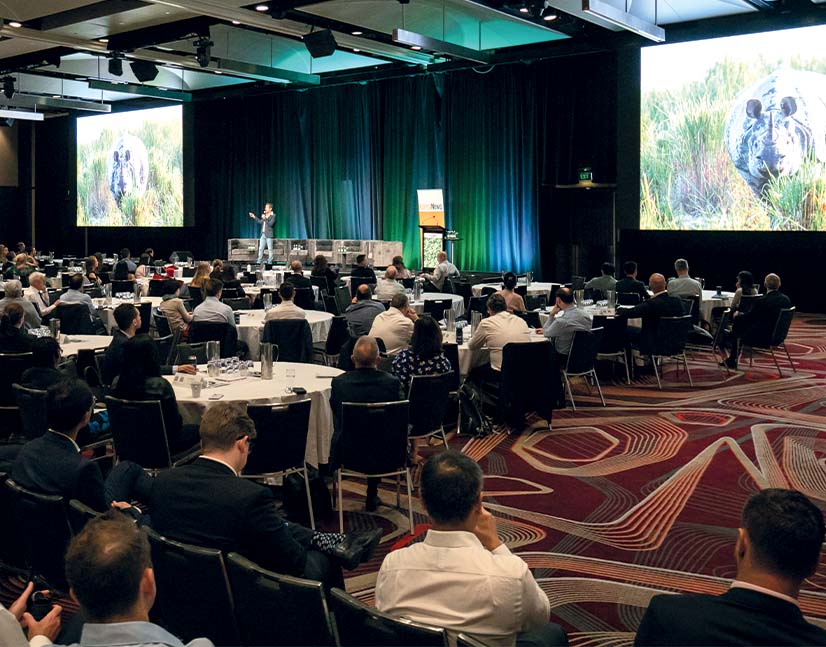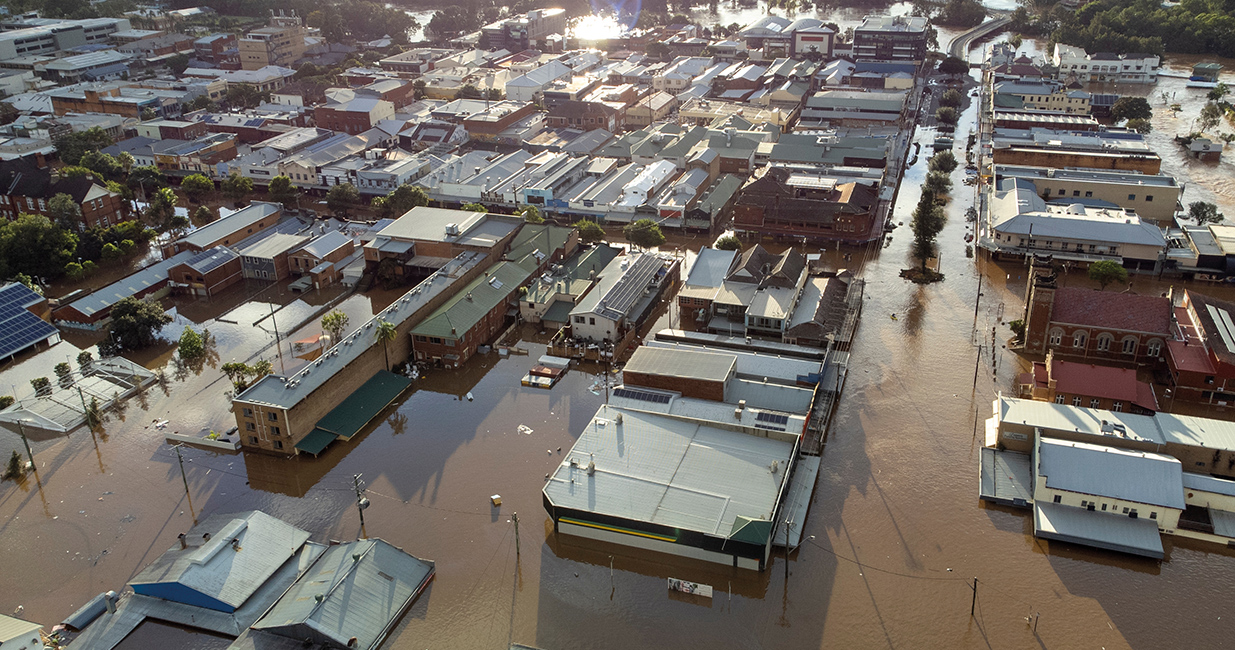
Eyes turn from mitigation to adaptation as climate risk becomes certainty
The primary focus of sustainable finance has traditionally been climate change mitigation: providing capital to decarbonise the economy and thus, it is hoped, minimise the scale of global heating. But with higher temperatures baked in – and more warming guaranteed to come – swathes of Australia increasingly need financing solutions to respond to climate change that is already here.
Laurence Davison Head of Content KANGANEWS
Even as the world battles with the increasingly difficult task of decarbonising to the extent that global warming is kept to ‘only’ 2 degrees above preindustrial levels, the consequences of the warming that is not just inevitable but already here become harder and harder to avoid.
The sixth volume of the Productivity Commission’s Managing the Climate Transition inquiry report, published in February, highlighted the breadth of impact from the 1.1 degrees of climate change that has already taken place since the industrial revolution and the estimated 0.3-1.7 degrees of further warming that is inevitable even if the world achieved net zero emissions immediately.
Because of climate change, the report notes research suggesting Australian wheat yields have fallen by 27 per cent since 1990 and that farm profits have fallen by 23 per cent this millennium. It also points to government research estimating that 70 per cent of key species in Australian fisheries are moderately to highly sensitive to climate change over the coming decades.
Then there are the human consequences. The same Productivity Commission report highlights research estimating the number of high-risk residential properties in Australia will nearly double by the end of this century, to nearly three-quarters of a million – a number that could be a substantial underestimate if there is “ongoing development... in high hazard areas or continued use of inadequate building standards”.
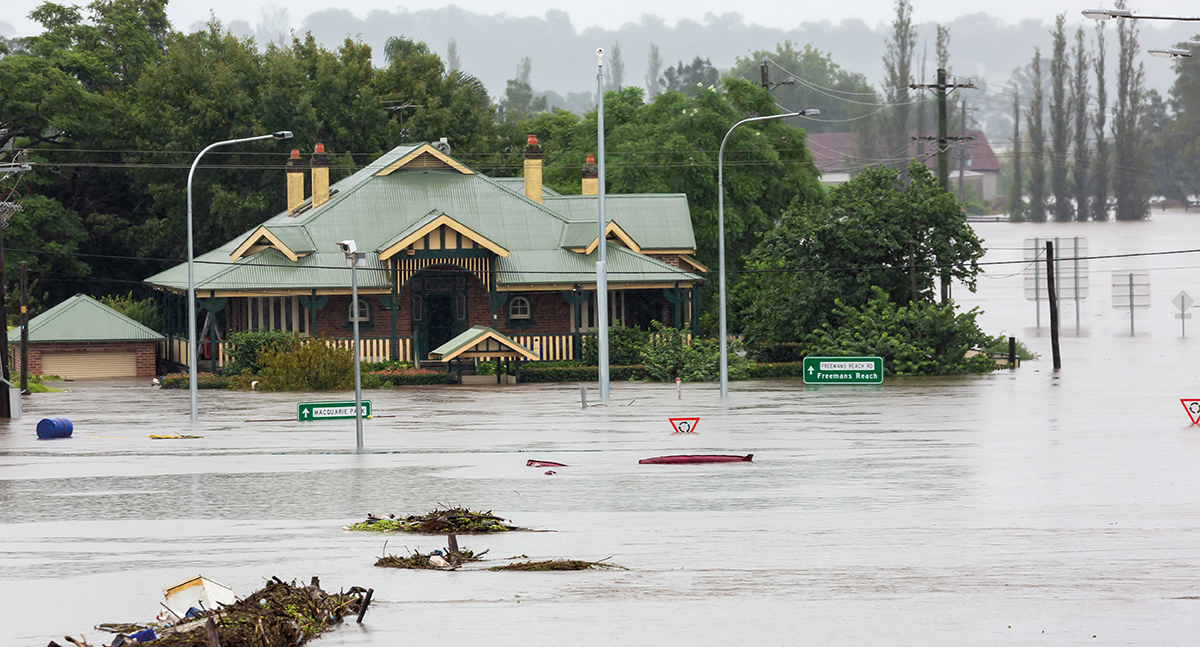
While it is impossible to attribute any single weather event to climate change, the regularity and extent of recent catastrophes should be enough to convince all but the most deluded deniers that risk has increased. For instance, three of the five most severe floods experienced in the Northern Rivers region of New South Wales since records began in 1870 have taken place since 2017. In Australia, the pandemic was bookended by catastrophic bushfires in 2019 and unprecedented floods in 2022.
Towns like Lismore in the Northern Rivers are on the front line of climate change impact that can no longer be avoided. Speaking at the KangaNews Sustainable Debt Summit in Sydney on 21 March, Adrian Watkin, chief risk officer at Lismore-based Summerland Credit Union, put the area’s situation in sobering terms.
He said: “In our region and our business, we used to talk about climate change risk. We don’t do that any more: it is a certainty. The community I work in would have been thrilled to hear people talk about decarbonisation. They are not interested in offsets, because offsets don’t stop climate events. They are not interested in mitigation, because this will take at least 5-10 years in Lismore. Lismore doesn’t have this time.”
The problems compound themselves when financial aspects are taken into account. Insuring businesses and homes in at-risk areas will become costlier, leading to more people not taking out insurance and thus greater impact on their lives and wellbeing when the next – inevitable – weather event occurs.
The Climate Council estimates that as many as one in 25 Australian properties will be “effectively uninsurable” by 2030, the vast majority because of the risk of riverine flooding. In the highest risk area – the federal electorate of Nicholls, in Victoria – more than one-quarter of properties may be uninsurable including 90 per cent of those in the town of Shepparton.
The impact is already coming through but there is undoubtedly worse to come. Rade Musulin, Sydney-based principal at actuarial consultancy, Finity, told delegates at the KangaNews conference that “almost all the insurance affordability pressures we are currently seeing in Australia have little to do with future climate risk”. Instead, rising cost principally comes from insurance providers’ improving understanding of address-level risk.
“If demanding insurance before providing finance became standard practice in Lismore – and places like it – I think it would effectively mandate a kind of managed retreat,” he explained. “There is already a cohort locally that simply can’t afford insurance, and in this case they will not be able to borrow to buy a house – so they will have to go somewhere else. It is a horrible reality.”
“We are already seeing affordability pressures in some places but these simply reflect the historical risk of floods and bushfires, not future risk,” Musulin said. “This should, in and of itself, be a sobering thought.”
Uninsurable property makes problems multiply. Watkin explained that Summerland already refuses to finance properties it deems to be vulnerable to flood if they do not have flood coverage, on the grounds of social responsibility. If this approach becomes endemic across the lending market, Watkin acknowledged that it would have severe consequences for the region.
“If demanding insurance before providing finance became standard practice in Lismore – and places like it – I think it would effectively mandate a kind of managed retreat,” he explained. “There is already a cohort locally that simply can’t afford insurance, and in this case they will not be able to borrow to buy a house – so they will have to go somewhere else. It is a horrible reality.”
HARD TO SOLVE
This issue demonstrates in microcosm the interlinked challenges posed by the impact of climate change and how at times the potential solutions pull in different directions. One of the overarching issues is that people often do not want to leave the properties, towns and regions they call home even as catastrophic climate events affecting them move from generational to near-annual.
Watkin said: “Lismore is an incredibly resilient community and some tremendous work has been done, by government and other authorities, to try to deal with the impact of the floods. But these are stubborn people… I guarantee the description I have given of the Lismore community is what we will see everywhere.”
To illustrate the point, Watkin revealed that the first response he had seen to a government offer to buy back property in the most at-risk areas was from someone who has been placed in the ‘red zone’ – which means physical danger to life from staying put. “This person was offered A$520,000 [US$345,000] for his house, which before the floods was valued in the mid-A$400,000s. He turned it down. He is also uninsured. He is quoted as saying: ‘I am not worried about the next flood. I am worried about my community, and I don’t want to move.’ This is a wonderful spirit, but it is also a recipe for human disaster.”
People do not value what we think is logical, Watkin argued. This could mean choosing to be uninsured – and even doubling down on the decision after an idiosyncratic event, on the basis that surviving what they believe to be the worst the climate can thrown at them means they have less to fear in future.
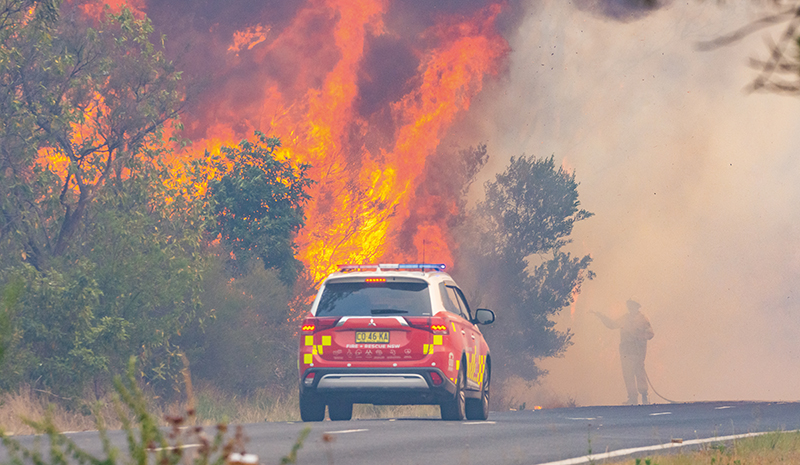
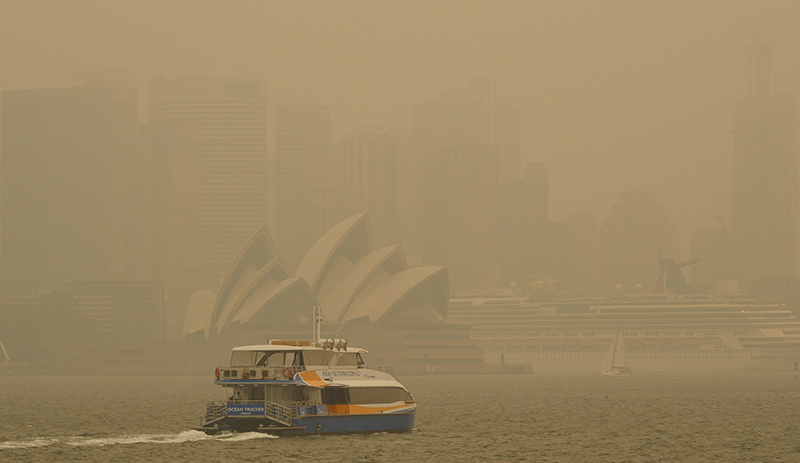
This is the case even when government steps in to underwrite managed retreat. Without this exogenous support, managing at-risk areas can become a zero sum, or in fact a negative sum, game.
Musulin said: “One of the solutions proposed has been to suggest making buyers of property much more aware of the risks – that it is flood prone or bushfire prone. This is all well and good, except there are two parties to the transaction. For every piece of information we give a buyer that may reduce the amount they are willing to pay for a house, the seller loses value in an asset – which may be their retirement savings or their life’s work in that property. This is through no fault of their own but just because we didn’t understand the risk in the past.”
In short, Musulin continued: “Almost everything we do to become more environmentally responsible can have an associated negative impact. It is easy to get carried away with the positive outcomes of transition but it’s not just about the big coal companies. Sometimes we don’t think about the towns that will be displaced as schools and small businesses close and people lose their jobs. This will be a major social challenge.”
FINANCING CONSEQUENCES
Underlying all these questions about adaptation is one central issue: who pays? To date, taxpayers have largely been willing for their governments to provide support in the wake of climate disasters, empathy winning out over cold calculation of risk. But there may not be infinite patience or willingness to cover the cost of recovery in areas that people elsewhere start to believe should probably no longer be inhabited.
The private sector is already unwilling to cross-subsidise at-risk areas. Insurance is again at the cutting edge but it is far from the only affected sector. “The insurance industry has a number of significant challenges because is very difficult for companies to knowingly under-price risk and subsidise one risk with another,” Musulin confirmed. “The industry is trying to play a constructive role in the transformation we need – for instance, the Insurance Council of Australia has been lobbying very hard in Canberra for a number of resilience measures.”
The first action point is to re-examine risk assessments made under conditions that do not exist anymore, and from there to focus resources on adaptation where possible. Musulin argued that “one thing we have to do with a problem like this is to stop making it worse, with urgency”.
“For every piece of information we give a buyer that may reduce the amount they are willing to pay for a house, the seller loses value in an asset – which may be their retirement savings or their life’s work in that property. This is through no fault of their own but just because we didn’t understand the risk in the past.”
The examples he highlighted are things like land use rules and building codes: effectively, to build more resilient houses and stop building at all in areas that are unacceptably vulnerable to climate events that will happen with greater regularity.
Even before this, there needs to be greater awareness of and focus on adaptation in the financial sector. For instance, Duncan Paterson, director of investment practice at Investor Group on Climate Change (IGCC) in Sydney, noted the relatively low level of engagement with physical risk among Australia’s buy-side community.
IGCC recently reported on net zero investment in Australia, finding that while 70 per cent of investors responding to a survey it conducted had net zero targets only 22 per cent had assessed the physical risk across their portfolios and only 9 per cent have actually taken action on those risks. “One of the first steps for investors is to build an understanding of physical risk into their practices,” Paterson suggested.
Speaking at the KangaNews conference, Charlotte Plaisant Millecamps, Sydney-based director, sustainable capital markets at Westpac Institutional Bank, added: “Adaptation is a very big challenge because, at the moment, capital markets are not focused on it. They are financing new things and mitigation initiatives. This is a call for us as bankers to think more about adaptation as we guide our clients toward their possible options. Then we must engage with investors to alleviate their concerns, because climate risk is a financial risk at the end of the day.”
Brian Cahill, global head of ESG integration at Moody’s Investors Service in Sydney, summed up the state of play. “There is a considerable amount of work to be done,” he said. “We are all aware of the issues and we are thinking about them. But we have not yet embedded sophisticated management of them.”
BABY STEPS
Still, there are signs of progress – at least in the sense that the sustainable finance industry and other stakeholders increasingly know what is needed to make meaningful progress. At ground level, this means data: understanding in even more detail what is being financed and how every individual asset can maximise its resilience.
“At the moment, we know a lot about where things are but not much about what they are. We need to improve this,” Musulin argued. “This means getting down to retail level – individual property owners – because there is a lot they can do to strengthen a house for A$1,500-2,000. We can take steps toward resilience, even though certain properties, tragically, cannot be made economically viable.”
Adaptation finance is also learning a lot from the evolution of other parts of the sustainable finance sector. Key among the lessons is that a common language backed by a coherent policy platform provides a playing field on which participants can start kicking goals.
“The kind of risk we are talking about – things like a bank or an insurer knowing that a house is situated on a floodplain – has been likened to the tobacco industry: questions about what they knew, when they knew it and what they did about it. Entities will be held to account if they make investment decisions in light of knowledge about climate risk.”
“We have been working on encouraging government to develop a national transition plan, so we can have joined-up thinking at policy level on these issues,” Paterson revealed. “Too many decisions are being made in isolation and policy uncertainty is one of the biggest issues holding back investors in this space. A national approach that coordinates and develops joined-up thinking is critical.”
Edwina Kwan, partner at King & Wood Mallesons in Sydney, added: “Having cohesive policy and regulation around adaptation should also reduce litigation risk. The kind of risk we are talking about – things like a bank or an insurer knowing that a house is situated on a floodplain – has been likened to the tobacco industry: questions about what they knew, when they knew it and what they did about it. Entities will be held to account if they make investment decisions in light of knowledge about climate risk.”
The challenges are clearly acute and the timelines ever-shorter. But there are some hopes for rapid progress. Cahill said: “The level of sophistication in how we will think about the financial implications of the physical impact of climate change in five years’ time will match the level of sophistication we have now, relative to half a decade ago, in the debate on transition. However, there is a considerable amount of work still to be done.”

WOMEN IN CAPITAL MARKETS Yearbook 2023
KangaNews's annual yearbook amplifying female voices in the Australian capital market.









